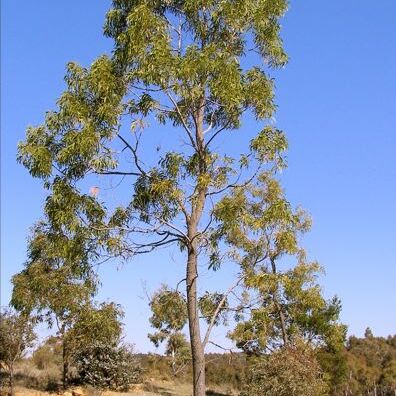Tree 3–15 m high, often gregarious due to suckering; bipinnate leaves may persist on young plants. Bark rough, greyish. Branchlets terete, not prominently ribbed, commonly lightly pruinose, glabrous. Phyllodes narrowly elliptic, falcate, 7–20 cm long, 6–25 mm wide, much-narrowed at base, acute to acuminate, sometimes ± obtuse, thinly coriaceous, green, glabrous, with 3–7 main veins and numerous longitudinally anastomosing minor veins in between. Inflorescences 4–8-headed racemes; raceme axes 10–45 mm long, glabrous; peduncles 6–15 mm long; heads globular, 5–6 mm diam., 30–52-flowered, cream to pale yellow. Flowers 5-merous; sepals ¾-united. Pods linear, coiled and twisted, to 25 cm long, 4–7 mm wide, ± woody or thickly coriaceous, glabrous. Seeds longitudinal, oblong-oval, 4–5 mm long, subglossy, dark brown; funicle/aril fleshy, white, folded beneath the seed.
More
A small tree. It grows 4-5 m tall. The leaves have leaflets and these last on young plants. The phyllodes are narrow and 7-20 cm long by 1-2 cm wide. The flowers are in branched groups in the axils of leaves. The fruit are pods that are slightly raised over the seeds.


